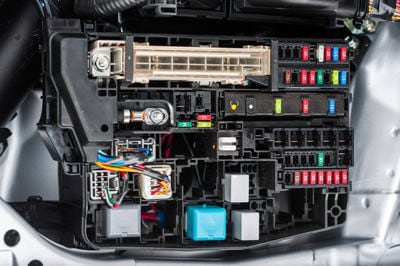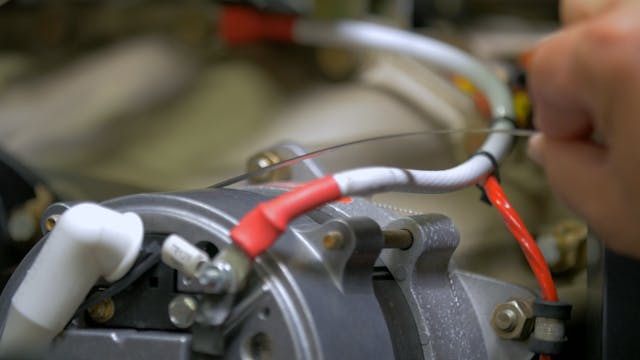Streamline processes with dedicated mechanical system optimisation support.
Streamline processes with dedicated mechanical system optimisation support.
Blog Article
Top Tips for Effective Electric System Troubleshooting
Fixing electric systems needs a methodical strategy, based in an extensive understanding of electrical principles and security protocols. The subtleties of efficient troubleshooting expand past mere technical knowledge; recognizing just how to record findings and prioritize safety can substantially influence outcomes.
Understand the Fundamentals
Recognizing the fundamentals of electrical systems is crucial for efficient troubleshooting, as a solid foundation permits professionals to diagnose and fix concerns more successfully. A thorough grasp of electrical concepts, such as voltage, current, resistance, and power, is important in determining the origin creates of issues. Voltage is the electrical potential difference that drives current with a circuit, while resistance opposes the flow of current, affecting the overall functionality of the system.
Knowledge with circuit parts, including resistors, capacitors, diodes, and switches, is additionally vital. Each part plays an unique duty in circuit behavior and can impact efficiency when malfunctioning. Furthermore, comprehending collection and parallel circuit arrangements is vital, as these arrangements affect the circulation of voltage and current within the system.
In addition, knowledge of safety and security protocols is crucial. Technicians need to recognize potential dangers, such as shock and short circuits, to apply risk-free troubleshooting methods. By mastering these fundamental principles, specialists enhance their capability to perform reliable diagnostics and repair services, eventually leading to enhanced performance and dependability of electrical systems. This fundamental expertise is the cornerstone of successful troubleshooting ventures.
Gather Necessary Tools
Effective troubleshooting of electric systems needs the best collection of tools to diagnose and solve concerns precisely. A well-appointed professional can substantially boost performance and performance in determining problems. Necessary devices include a multimeter, which measures voltage, present, and resistance, enabling accurate analyses of electric elements. Secure meters are also useful for measuring current without separating the circuit, guaranteeing safety and ease.
Furthermore, insulated hand devices such as screwdrivers, pliers, and wire strippers are critical for safely manipulating electrical links. It is additionally advisable to have a circuit tester handy to validate the presence of voltage in outlets and wires. For more complex systems, a thermal imaging video camera can assist find overheating components, showing prospective failures.

Adhere To an Organized Strategy
Having collected the suitable devices, the next action in repairing electrical systems is to comply with an organized strategy. A systematic strategy ensures that service technicians can identify faults effectively and properly, minimizing downtime and avoiding unnecessary repair work.
Begin by reviewing the system's schematic diagrams and specifications. This involves monitoring each part methodically, starting from the power source and functioning in the direction of the lots.
Make use of testing devices, such as multimeters and oscilloscopes, to collect objective information concerning voltage, present, and resistance at different points within the system. This empirical evidence will certainly direct your troubleshooting initiatives and aid to verify or remove potential reasons of failing.
Additionally, think about environmental variables that may affect the system's efficiency, such as temperature changes or dampness ingress. An extensive examination of wiring, links, and elements will certainly ensure that all possibilities are made up.
Document Your Findings
Complete documentation is crucial in the repairing procedure of electrical systems. Accurate records improve the effectiveness of recognizing persisting problems and promote interaction among employee. Each searching for ought to be diligently noted, consisting of signs observed, tests conducted, and the results of those tests. electrical system troubleshooting. This practice not just aids in comprehending the source of the problem however also Extra resources acts as a referral for future fixing initiatives.

Furthermore, maintaining a log of parts changed or repair work done is very useful. This information supports stock monitoring and can help analyze the longevity and reliability of certain elements.
Eventually, the documentation procedure must be thorough yet succinct, allowing very easy access and evaluation - electrical system troubleshooting. By focusing on detailed paperwork, service technicians can produce a beneficial knowledge base that not just aids in existing troubleshooting yet additionally empowers future upkeep initiatives, consequently improving total system integrity

Prioritize Precaution
Identifying the intrinsic threats associated with electric systems is important for ensuring safety and security during troubleshooting. Electrical shock, burns, and devices damage are simply a few of the potential risks that specialists encounter. Focusing on safety and security actions is not just a lawful obligation yet also an ethical crucial that safeguards both the specialist and the surrounding setting.
Before starting any type of troubleshooting task, service technicians ought to put on proper personal safety devices (PPE), consisting of insulated handwear covers, security glasses, and flame-resistant garments. Guaranteeing that the workplace is dry and devoid of clutter can substantially lower the threat of accidents. Additionally, it is important to de-energize circuits prior to starting any kind of work, confirming that they are not endure making use of a multimeter or voltage tester.
Establishing clear interaction methods with group participants is like this additionally essential; this ensures that every person understands possible risks and the status of the electrical system being worked on. Having an emergency action plan in place can show very useful in the occasion of an occurrence. By prioritizing safety measures, professionals can successfully reduce risks and cultivate a more secure office.
Final Thought
Efficient electrical system troubleshooting counts on a thorough understanding of basic concepts and a methodical strategy. Focusing on safety and security actions makes certain the well-being of people included and the stability of the click over here electric system.
Report this page